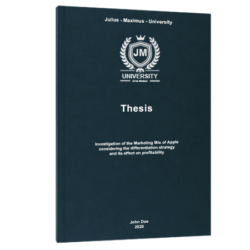
In this current economic state, the market is packed with a wide range of businesses. Each of these organisation s competes against each other for profitability. Each of the companies or organisation s have goals that make them different from the rest. However, achieving these goals can be challenging in many ways. This means that organisation s have to keep analysing their performance and state to see if they are moving in the right direction. Gap analysis belongs to methodology and is an incredible tool to achieve this purpose.
Gap Analysis - FAQ
The term gap analysis refers to a tool used to compare the current and the ideal state of a business, system, project or process. It is used to compare the desires and actual outcomes so that a company can pinpoint opportunities to fill the gap. It is essential for companies that are going through some shortcomings or failing to meet targets.
Tip: If you are done with your academic work, we can help you with dissertation printing!
You can use this tool for the following purposes;
- To identify the current state of an organisation or project in a process. For instance, it can determine the steps in a process, what it takes to complete them and the resources required.
- To determine the best practices to implement in a business and how they will help the organisation meet its goals.
- To identify the difference or gap between the company’s current state and desires for the future. This can be done by identifying the available gaps, their causes or barriers, and opportunities for improvement.
- This gap analysis tool also helps businesses discover how they can close the gap between their desires or goals and their current state.
Below are some popular gap analysis tools;
- SWOT- this tool focuses on the strengths and weaknesses of an organisation ’s internal environment. It also looks at opportunities and threats that may influence an organisation ’s performance in the external environment. It helps determine where a business stands in an industry or market.
- Fishbone diagram- this tool, also known as the cause and effect diagram, identifies the root cause of issues and effects. It helps guide you on how to understand and perform the cause and effect analysis.
- Nadler-Tushman’s congruence model- this tool is used to identify performance gaps within a business or organisation . This tool is usually based on the principle that the performance of a company is significantly influenced by four key elements (people, structure, culture and work)
- Burke-Litwin causal model helps businesses understand its different components and how they relate to each other and go through changes.
Below are some standard perks of completing this formal study:
- It provides you with a comprehensive review of your business’s or project’s current state and how its current processes operate.
- It helps you clarify and prioritize the different elements that need improvements and growth in an organisation .
- It helps you determine how forward and implement opportunities to fill the gap between the current state and the goals of a business.
The amount of time it takes to complete a gap analysis depends on the tool you are using. It also depends on several other factors like the size and complexity of your environment. The available resources to complete the analysis also play a significant role. Therefore, there is no specific number for the amount of time it would take to complete a gap analysis.
GAP Analysis: Definition
Gap analysis refers to a formal study of what your business or project is currently doing, where it is heading and how to close the gap between the two places. This study compares the desires and actual outcomes of a business or a project. It also pinpoints the company or project’s opportunity to grow or improve. Businesses or project managers usually use this formal study in the face of a shortcoming. For instance, a company or project manager can use this study if its sales team fails to meet its target or if the clients are always complaining.
Components of the GAP Analysis
Below are some significant elements of GAP analysis:

State descriptions
This is the first step of any gap analysis and one of the most important ones. This step includes identifying your current and future desired state. This element consists of the following:
- Current state– you have to start by analysing the current state of a project or an organisation . Here, you have to list all the attributes of your project and how you would like to see them improved. You can focus on the entyre business or projects or segments within the industry.
- Future state– here, you have to describe the ideal condition you would like your business or organisation to be in. You can create a list of your expectations and how you intend to reach them. You also need to identify the things that are keeping your organisation or project from reaching those goals.

Bridging the gap
The next element of the gap analysis is bridging the gap. After identifying the things that are not going right within an organisation or project, you need to find ways to remedy the situation. This element consists of the following:
- Gap identification– here, you have to record whether a gap exists between the current and future state. If there is a gap, you also have to describe it in a column.
- Gap description– here, you have to record all the elements that make up the gap between the organisation or project’s current and future state. The description needs to be consistent with the current and future states. You can also make it qualitative.
in Your Thesis

Factors and remedies
This element is where you start identifying the factors responsible for the gap between the organisation ’s states. It consists of the following:
- Identifying factors responsible for the gap– creates a list of all the factors causing the gap. Make the list specific, relevant and very objective.
- Determine the remedies, actions and proposals– here, you have to identify the solutions to the factors listed in the column above. Ensure the remedies or solutions directly address the factors listed in the section before. The solutions need to be action-oriented and very specific.
GAP Analysis: Do’s and Don’ts
The Do’s and Don´ts of the GAP analysis are:

- Use this tool on instances when there are shortcomings in a project
- Be very specific when identifying the states, gaps and elements.
- You can apply this in a new business setting

- You cannot apply this in an industry
In a Nutshell
Gap analysis is a useful tool for analysing and understanding the performance of a project or organisation . It is handy for new businesses that need insight into how to organise and allocate their resources. Gap analysis can be conducted in various perspectives like; organisation , business direction, processes and information technology. This analysis can be done using a wide range of tools or methodologies. It helps organisation s identify the factors leading to their shortcomings, develop solutions, and bridge the gap between the current and desired state.

